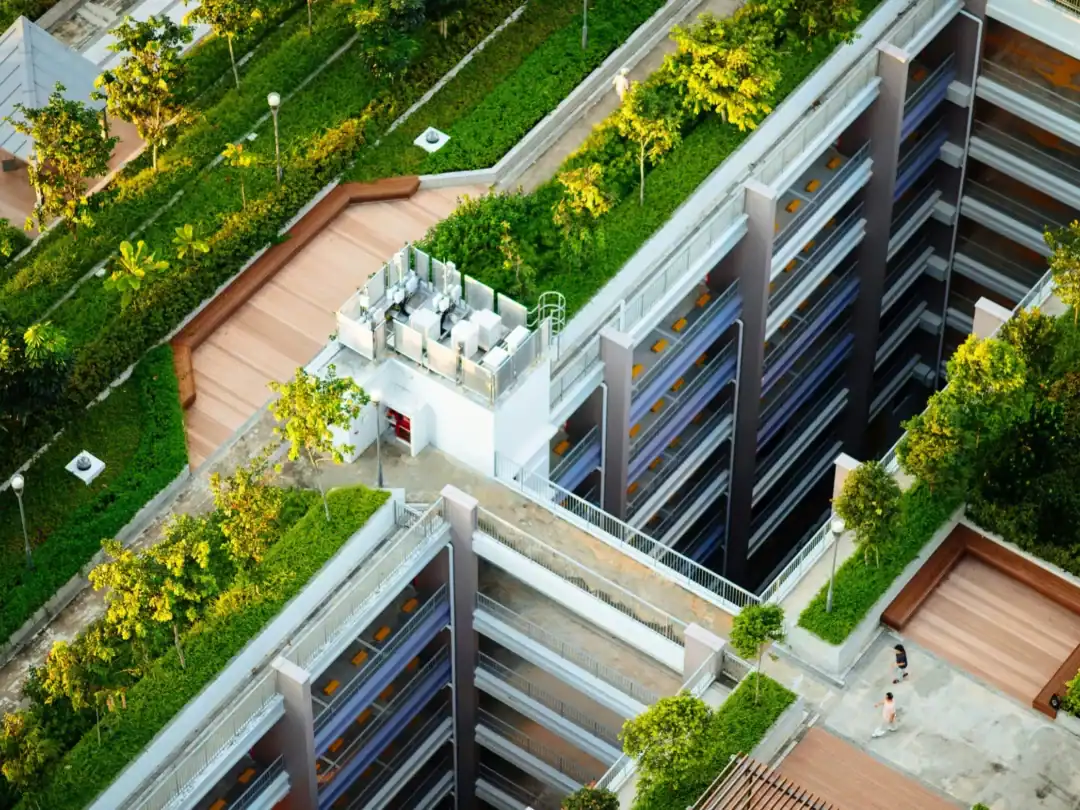Water scarcity has risen to the forefront of environmental concerns worldwide, influencing industries across sectors. For Real Estate Investment Trusts (REITs), which manage extensive property portfolios spanning commercial, residential, and industrial assets, water conservation is becoming an essential part of sustainable property management. The integration of effective strategies to reduce water consumption not only aligns with environmental objectives but also impacts operational expenses, tenant satisfaction, and regulatory compliance. This article explores the evolving landscape of water conservation within REIT-owned properties, examining practical approaches, financial implications, and long-term benefits.
The Growing Importance of Water Conservation in Real Estate
Water is a finite resource, subject to increasing demand due to population growth, urbanization, and climate change. Many regions experience periodic droughts or chronic shortages, imposing risk on water availability and cost. Buildings, especially those in urban environments, contribute significantly to water consumption through irrigation, sanitation, cooling systems, and daily tenant use. Within REIT portfolios, managing this consumption responsibly has emerged as a strategic priority.
Investors and regulators reflect this heightened awareness. Sustainability criteria now often include water use efficiency, compelling REITs to consider conservation as part of Environmental, Social, and Governance (ESG) frameworks. Meanwhile, tenants—particularly commercial occupants—express greater interest in leasing spaces that demonstrate resource stewardship. Consequently, water conservation represents more than an operational concern; it influences asset valuation and market competitiveness.
Water Usage in REIT Properties
Understanding where water is used within properties is the first step toward effective conservation. Several key areas typically account for significant consumption. Restrooms and kitchens consume water through fixtures like toilets, faucets, and dishwashers. Outdoor landscaping, especially extensive green spaces or decorative fountains, can also be water-intensive, depending on climate and irrigation methods.
Mechanical systems—including cooling towers and boilers—often require large volumes of water for temperature regulation. Additionally, laundry facilities and certain industrial processes in specialized properties add to overall usage. Each of these categories offers distinct opportunities for reduction, tailored to the specific characteristics of the asset and its tenants.

Implementing Water-Efficient Fixtures and Appliances
A foundational strategy in water conservation involves upgrading to fixtures and appliances designed to minimize consumption without compromising functionality. Low-flow toilets and faucets, waterless urinals, and sensor-activated fixtures contribute substantially to reducing indoor water use. These technologies limit volume per use and eliminate waste caused by leaks or excessive flow.
Replacing conventional dishwashers and laundry machines with Energy Star-rated, water-efficient models further enhances conservation in residential or mixed-use properties. While the initial expenses vary, these retrofits typically provide rapid cost savings through reduced utility bills and require minimal operational intervention.
In REIT-managed commercial buildings, restroom upgrades are particularly effective given high occupant turnover. Simple installations of automatic shutoff valves and leak detection systems help prevent unnoticed water losses, which can accumulate into significant expense and environmental impact over time.
Smart Irrigation and Landscape Management
Outdoor water use presents a distinct challenge in many REIT properties, especially those with landscaped areas or recreational facilities such as golf courses. Traditional irrigation systems often operate on fixed schedules, disregarding precipitation or soil moisture, leading to unnecessary water consumption.
Adopting smart irrigation technologies enables more precise control. Sensors monitor soil moisture, weather conditions, and evapotranspiration rates, triggering irrigation only when necessary. Advanced controllers integrate real-time data, optimizing watering frequency and duration. Such systems can reduce outdoor water use by up to 30-50%, a meaningful saving in high-demand environments.
Complementary landscape design choices also contribute. Selecting drought-resistant, native plants adapted to local climates reduces irrigation needs. Utilizing mulch conserves soil moisture, while porous paving materials prevent runoff and encourage groundwater recharge. These practices promote resilience and sustainability while enhancing property aesthetics.
Capturing and Reusing Water Resources
Water reuse strategies represent another layer of conservation, particularly as regulatory frameworks encourage alternatives to fresh water consumption. Greywater systems capture relatively clean wastewater from sinks, showers, and laundry, treating it sufficiently for non-potable uses such as irrigation or toilet flushing.
Installing rainwater harvesting systems further diverts stormwater from municipal supplies. Collected water can irrigate gardens or supply cooling towers, reducing dependence on treated water. Although these systems require upfront investment and careful planning to meet health and safety standards, the long-term reductions in water bills and environmental footprints are significant.
For industrial or specialized commercial properties, advanced treatment technologies enable recycling of process water, further cutting demand for fresh supply. Integrating such systems into REIT portfolios can demonstrate leadership in sustainability and comply with increasingly stringent water management policies.
Financial Implications and Return on Investment
Implementing water conservation strategies entails varying degrees of capital outlay, from simple fixture replacements to complex irrigation upgrades or water recycling installations. REITs must judiciously evaluate the financial rationale, balancing initial costs against expected savings and potential asset appreciation.
Reduced water bills generate immediate operational savings, improving net operating income (NOI) and enhancing property valuation. In regions with water scarcity, elevated tariffs create stronger incentives to invest in efficiency. Additionally, grants, rebates, and tax credits from governmental or utility programs often mitigate upfront expenses, shortening payback periods.
Beyond direct cost savings, properties boasting robust water management demonstrate stronger attractiveness to investors focused on ESG criteria. This interest can translate into better financing terms, higher occupancy, and tenant retention, supporting long-term portfolio performance.

Challenges and Considerations for REIT Water Conservation
Despite evident benefits, implementing water-saving measures across varied property types poses complexities. Portfolio diversity means tailored approaches are necessary; what works for office buildings may not suit industrial or residential assets. Additionally, retrofitting older structures with outdated plumbing systems can involve higher costs and logistical hurdles.
Tenant turnover presents challenges for maintaining consistent behavior and system upkeep. Monitoring water use at the building or tenant level requires robust metering infrastructure and data management capabilities.
Moreover, balancing water conservation with maintaining occupant comfort is crucial. Overly restrictive measures can dampen tenant satisfaction or lead to unintended consequences, such as poor hygiene or landscape degradation.
Addressing these concerns demands comprehensive planning, interdisciplinary collaboration, and ongoing assessment to optimize both environmental and financial outcomes.
The Future of Water Conservation in REIT Portfolios
With pressures mounting from climate change, resource scarcity, and stakeholder expectations, water conservation in real estate will only grow in importance. Innovations in sensor technology, machine learning, and automated control systems promise greater precision and efficiency in managing consumption.
At the same time, evolving policy landscapes will reward demonstrable commitment to responsible water stewardship, making conservation integral to portfolio risk management.
For REITs, integrating water-saving strategies is not a peripheral option but a central investment priority. When executed thoughtfully, these measures safeguard assets, reduce costs, and affirm leadership in the transition toward sustainable, resilient real estate.
Frequently Asked Questions about Water Conservation Strategies in REIT-Owned Properties
-
Why is water conservation important for REIT-owned properties?
Water conservation reduces operating costs, supports sustainability goals, meets regulatory requirements, and enhances tenant satisfaction in REIT portfolios. -
What are common water conservation measures implemented by REITs?
REITs often upgrade to low-flow fixtures, employ smart irrigation systems, implement water reuse technologies, and promote tenant engagement programs. -
How can smart irrigation systems save water in REIT properties?
These systems use sensors and weather data to regulate watering, preventing over-irrigation and significantly lowering outdoor water consumption. -
What role do tenants play in water conservation efforts?
Tenants influence water use through behavior; engaging them in awareness campaigns and incentivizing conservation supports overall savings. -
Are there financial benefits to water-saving retrofits for REITs?
Yes, savings on water bills, eligibility for rebates, improved asset value, and enhanced investor appeal contribute to a strong financial case. -
How do water conservation strategies affect property value?
Properties with efficient water management attract environmentally conscious tenants and investors, often commanding higher valuations and lower vacancy rates. -
What challenges do REITs face in implementing water conservation?
Challenges include diverse property portfolios, retrofit complexities in older buildings, tenant turnover, and ensuring occupant comfort. -
How do regulations impact water conservation in REIT portfolios?
Increasing regulations set efficiency standards and reporting requirements; compliance reduces legal risks and aligns with ESG expectations.










